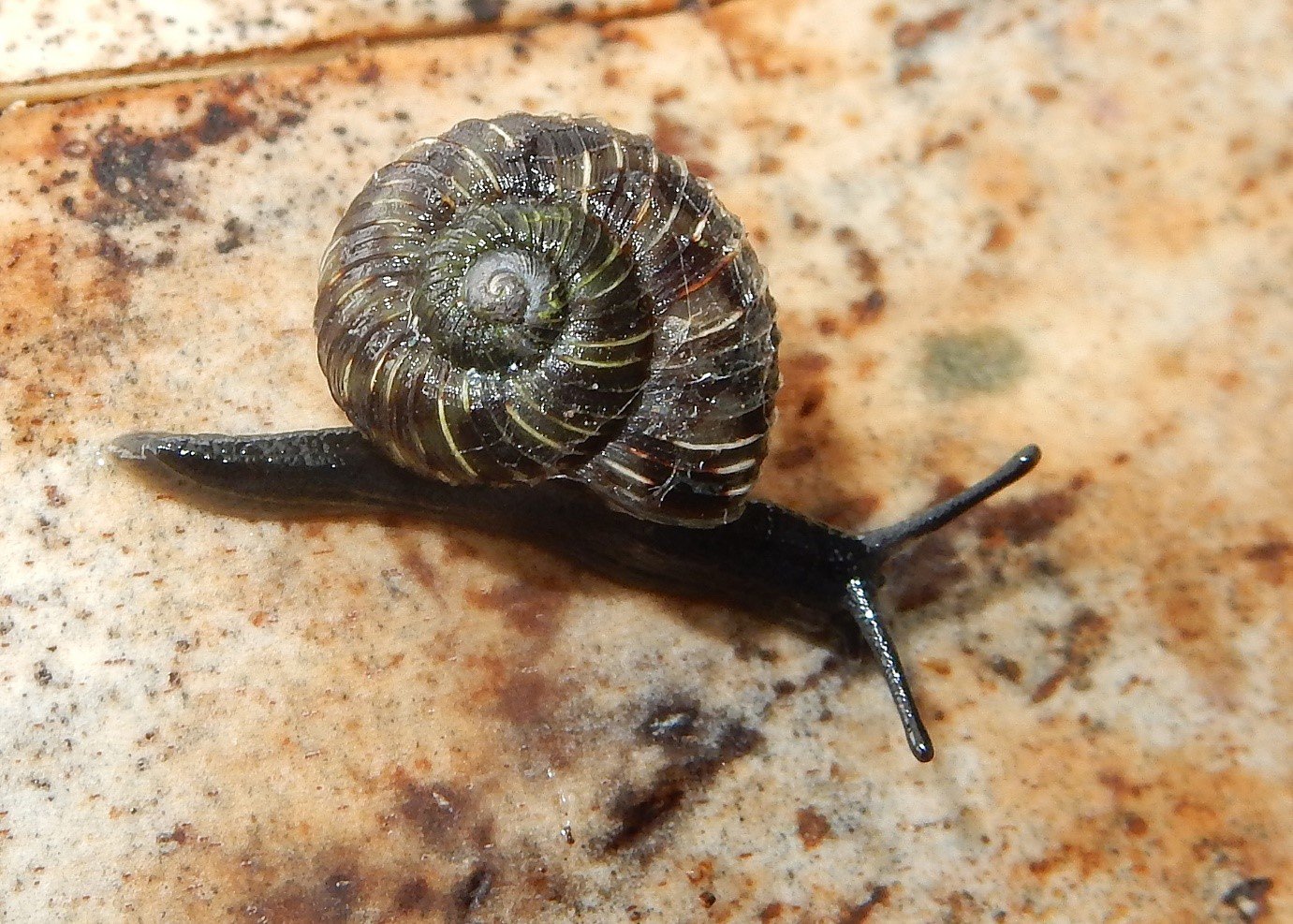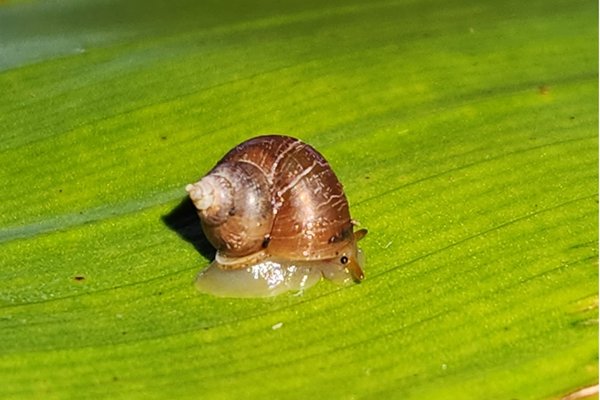Chasing endemic land snails on Lord Howe Island
Climbing high mountains, leaping out of boats, winching out of helicopters … we are prepared to do it all, and more, for endemic snails!
Lord Howe Island is a remote island of stunning beauty in the Tasman Sea, lying between Australia and New Zealand. It is a World Heritage listed site and is renowned for its high numbers of endemic plants and animals. This tiny island of only 14 km2 has Australia’s highest diversity of land snails, with around 70 species found nowhere else. Frank Köhler and I have been lucky enough to spend several years studying these unique and beautiful creatures, and have just released a glossy field guide documenting them all. This is the first such guide for the Lord Howe Island snails.

A Field guide to the Land Snails of Lord Howe Island. Australian Museum Scientific Publishing, Sydney.
Image: Abram Powell© Australian Museum
Our journey to this point has been eventful and exciting – and more intrepid than you might expect, considering that we are chasing such slow-moving creatures! Lord Howe Island has diverse habitat types, ranging from towering basalt mountains topped with cloud rainforest to coastal grasses and heath. Three guesses as to where most of the snails are … yes! The most inaccessible and hard-to-reach mountaintops, dripping with moisture from the clouds that sit around them, are perfect sites for an explosion of snail diversity. This means that on expeditions to Lord Howe Island, we often spend large portions of our time climbing to remote sites, sometimes lugging heavy packs and camping equipment, in order to track down elusive species.

Dr Frank Köhler and Dr Isabel Hyman in the Australian Museum Malacology Collection area, with some of the shells of the snails featured in their 2020 book publication Land Snails of Lord Howe Island.
Image: Abram Powell© Australian Museum
So why are these land snails so deserving of all this time and effort? They represent a large radiation of unique but poorly understood species found nowhere else, and a number of them are under threat and at risk of extinction. The predominant threat has long been rodent predation. Rats are a huge problem on oceanic islands, where the fauna are very vulnerable to disturbance. Black rats were introduced to Lord Howe Island in 1918, and immediately there were clear and well-documented species declines and extinctions. Five species are currently listed as Endangered or Critically Endangered due to rodent predation, and more are likely to have suffered.
However, the good news is that after many years of planning and preparation, an island-wide rodent eradication was carried out last year, and the last rat was seen in October 2019. Since then, there have been remarkable improvements in seed germination and plant succession and increases in the numbers of many animal species. On our next survey, planned for November 2020, we hope to see an increase in the abundance of the endemic snail species as a result.
Another current threat is climate change. Our warming climate has led to a decrease in the number of days of cloud cover on the mountaintops, leading to the oceanic cloud forest being listed as a Critically Endangered Community and a decline in some of the summit snail species. Drier summers are also causing a contraction of some lowland snail species as well. By studying the past and present ranges of these species, we can determine if a species is in decline and if it is necessary to implement protective measures.
Several of our trips to Lord Howe Island in the last four years have been to assess the status of four Critically Endangered species, in the lead-up to the rodent eradication. These species are all from the southern mountains, and all are extremely rare, probably primarily due to rodent predation. They are ground-dwellers, ranging in size from 7 mm to 35 mm in shell diameter, and can generally be found by patient searching under leaves, palm fronds, rocks and logs on the ground. The three smaller species have been collected in small numbers in recent years, but the largest, the Magnificent Helicarionid Land Snail, has not been seen alive since 2002.

Frank Köhler and Isabel Hyman on Lord Howe Island.
Image: Craig Stehn© Craig Stehn
The southern part of the island has two large basalt peaks, Mt Gower (875 m) and Mt Lidgbird (777 m). The lower slopes of Mt Lidgbird have some marked trails, but around 500m a series of steep cliffs begins, and so the summit is best reached by helicopter and has only been surveyed very infrequently. We have undergone training to allow us to be winched on to the summit, but unfortunately the weather conditions have never been suitable and to date we have had to content ourselves with forays to the base of the cliffs, at different points around the mountain. Over four years of surveys, we have identified four sites where one of our target species can be found on the upper slopes of Mt Lidgbird (Mt Lidgbird Pinwheel Snail, pictured). It lives on basalt rock surfaces, sheltering in crevices during dry weather.

Pseudocharopa ledgbirdi, Mt Lidgbird Pinwheel Snail.
Image: Lachlan Copeland© Lachlan Copeland
Our second destination, Mt Gower, has a well-marked track and can be climbed with a guide, but with a 3-hour climb each way to reach the summit it is necessary to camp overnight to allow sufficient time for sampling. We have developed a series of 24 survey sites evenly spaced across the summit. Over four years, we have found two Critically Endangered species at three different sites either on or just below the summit (Whitelegge’s Pinwheel Snail, Slug-like Pinwheel Snail, pictured).

Pseudocharopa whiteleggei, Whitelegge’s Pinwheel Snail.
Image: Adnan Moussalli© Museum of Victoria

Mystivagor mastersi, Slug-like Pinwheel Snail.
Image: Adnan Moussalli© Museums Victoria
In all three cases, we have found no more than 5 specimens at any one site (and usually we only find one!). These species are clearly very rare, but with the removal of rodents we hope to document a slow increase in their numbers. The final species, the Magnificent Helicarionid Land Snail, has not been found now in many years and it is looking more likely that this species is extinct. However, given that their main predator has now disappeared, I live in hope that one day, I will turn over a leaf and find a Magnificent surprise, and you will hear my cries of joy echoing from the mountaintop.
Dr Isabel Hyman, Scientific Officer, Malacology, Australian Museum Research Institute
Acknowledgements
Documenting the Land Snails of Lord Howe Island and Norfolk Island was funded by the Australian Biological Resources Study, the Graeme Wood Foundation and the Office of Environment and Heritage.
A Field guide to the Land Snails of Lord Howe Island was funded by a grant from the Australian Museum Foundation.
More information:
Hyman, I. T., & Köhler, F. 2020. A Field guide to the Land Snails of Lord Howe Island. Australian Museum Scientific Publishing, Sydney.












